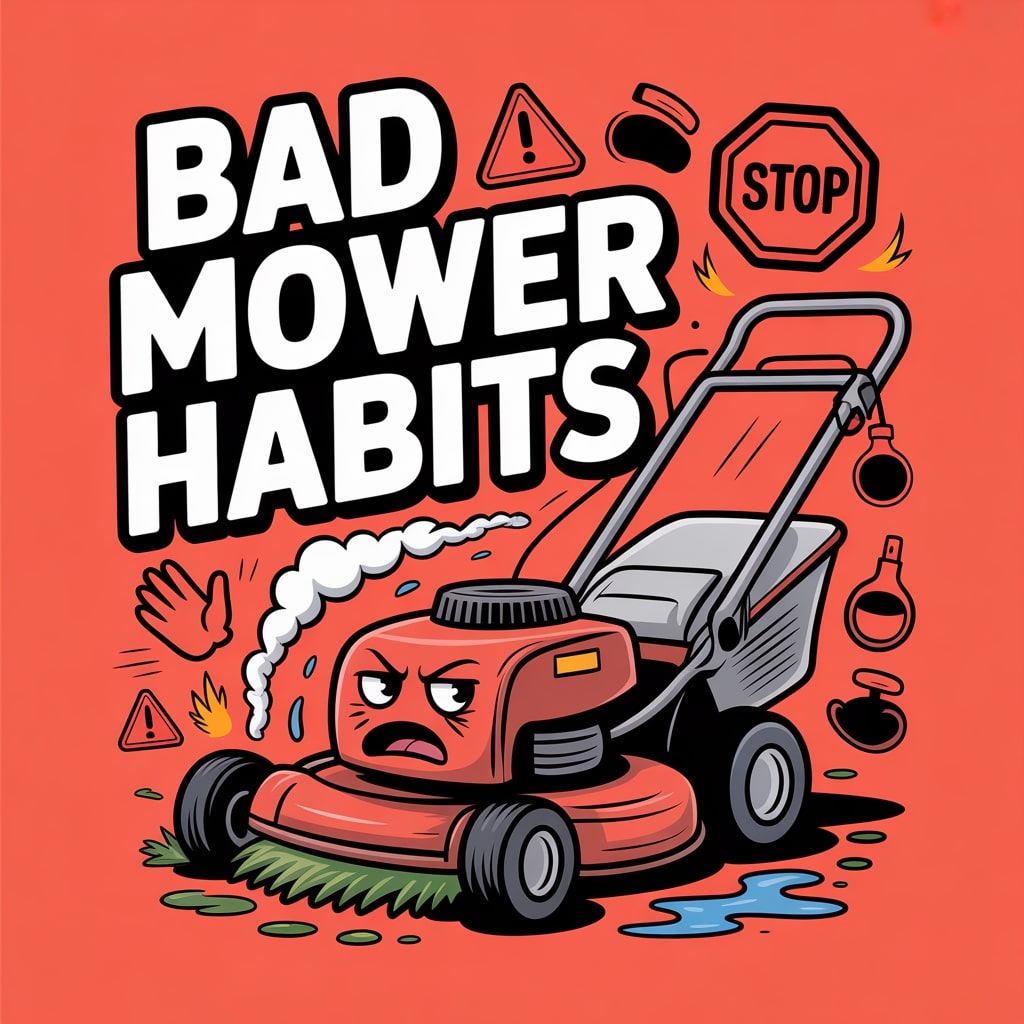
Let me tell you something straight: most folks don’t wreck their mower in one big moment. It’s never the dramatic “boom” or a giant rock explosion. Nope. The real damage comes from tiny bad lawn mower habits while mowing we repeat all season without thinking — mowing wet grass, running on old gasoline, ignoring dull blades, letting the deck fill up like a taco with grass buildup, or pretending that “we’ll check the oil next time.”
And before you know it? Your “perfectly fine” mower starts making noises that sound expensive.
I’ve seen every version of it. My buddy down the road once blamed his mower for “cutting crooked.” Yeah… turns out one tire was flat and the blade was so dull it looked like he used it to dig for fossils. Classic lawn mower mistakes. Happens every weekend in every U.S. neighborhood.
Here’s the truth: these little slip-ups are the exact mower habits that cause damage — the sneaky stuff that leads to mower damage over time, weird vibrations, overheating, and sudden “why won’t this stupid thing start?” moments.
They’re small, but they add up faster than you’d think.
Fast check:If your mower smells hot, vibrates, leaves uneven cuts, or clogs the deck every five minutes… that’s not “just how it is.” That’s your machine begging you to stop the things that are slowly killing it.
So let’s fix that. Below are the 12 everyday what NOT to do when mowing habits, the little actions that shorten mower lifespan, and the easy fixes that’ll keep your mower running smooth instead of dying young like every neglected machine on Facebook Marketplace. Let’s save your mower before it files for retirement.
12 Damage-Causing BAD Lawn Mower Habits You Need to Stop Today
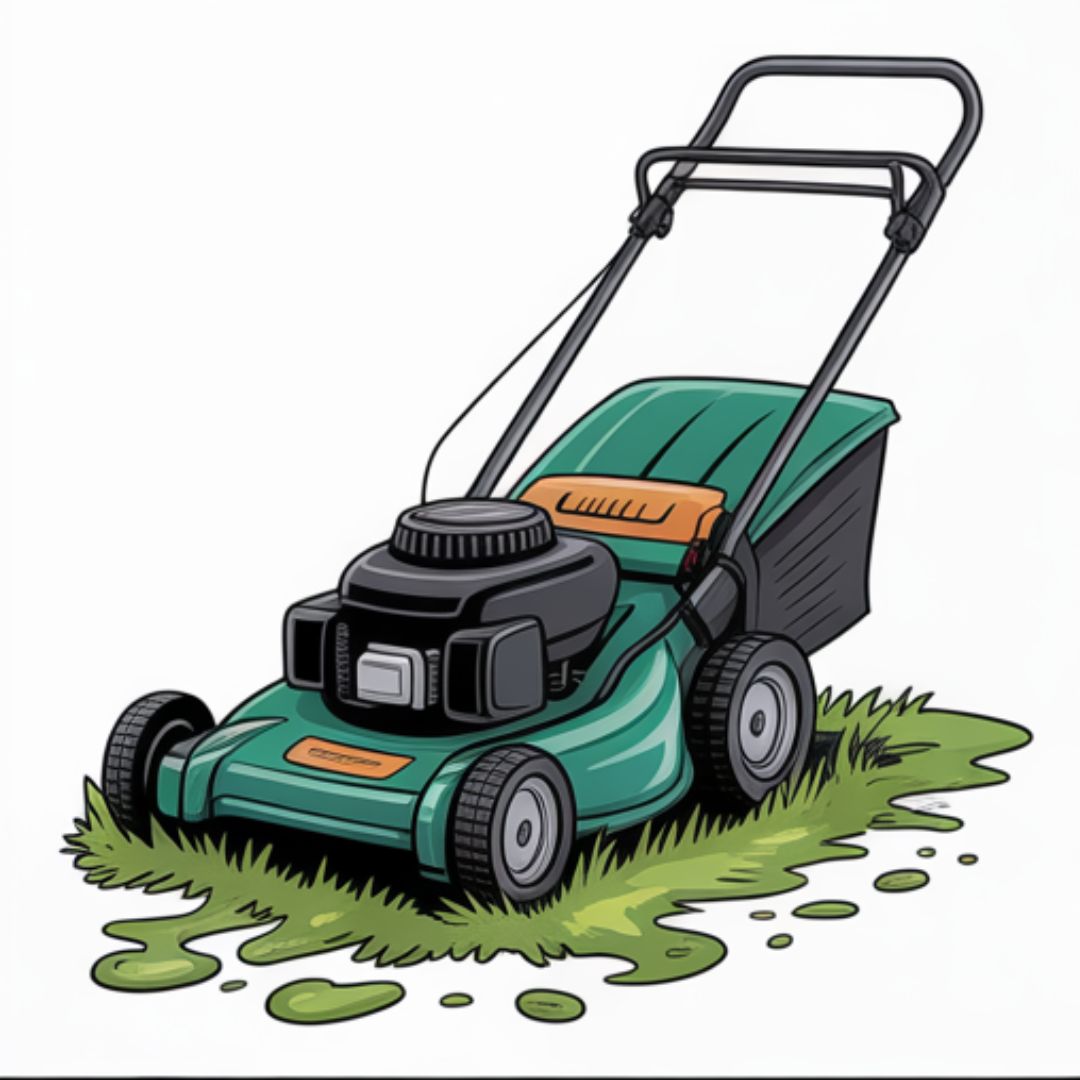
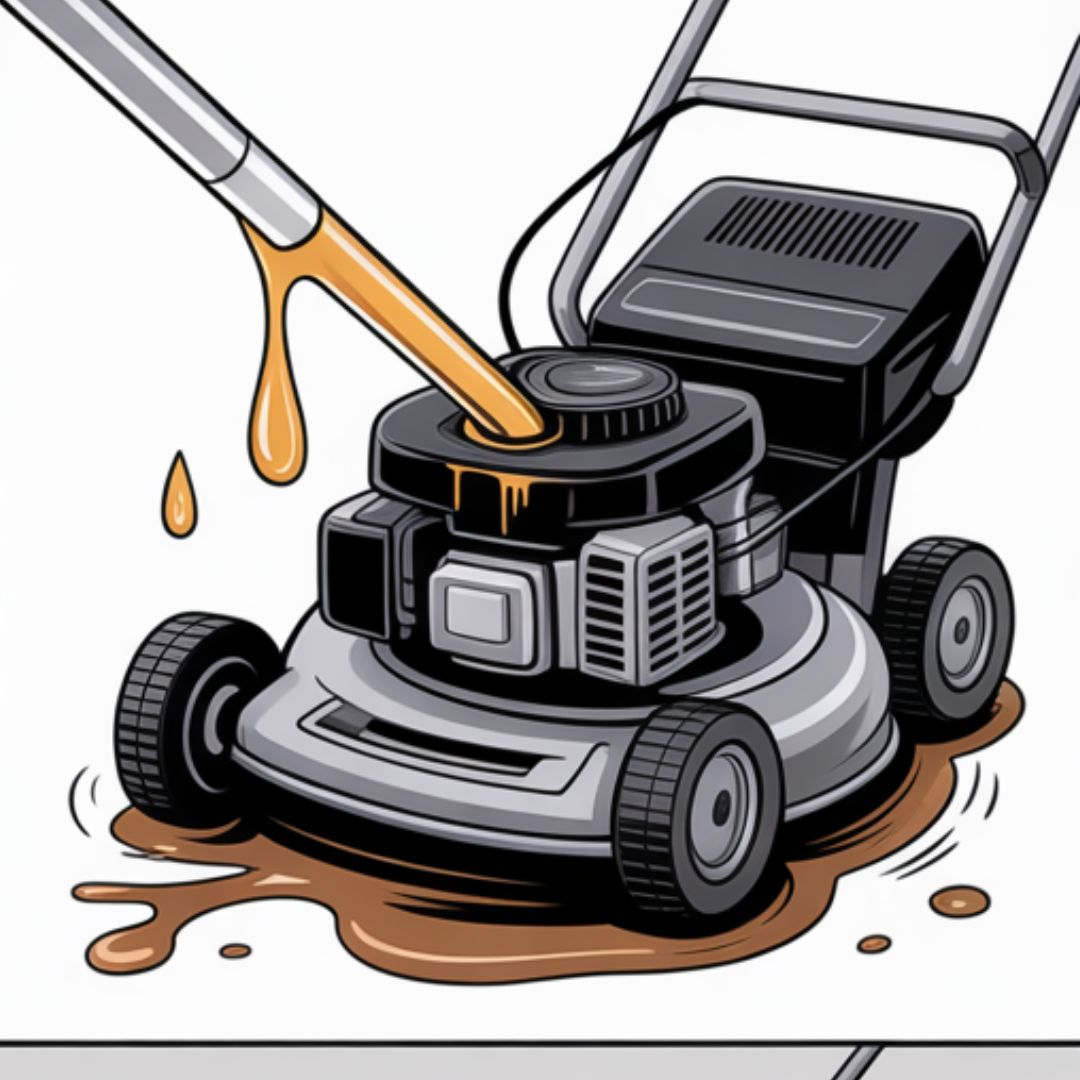
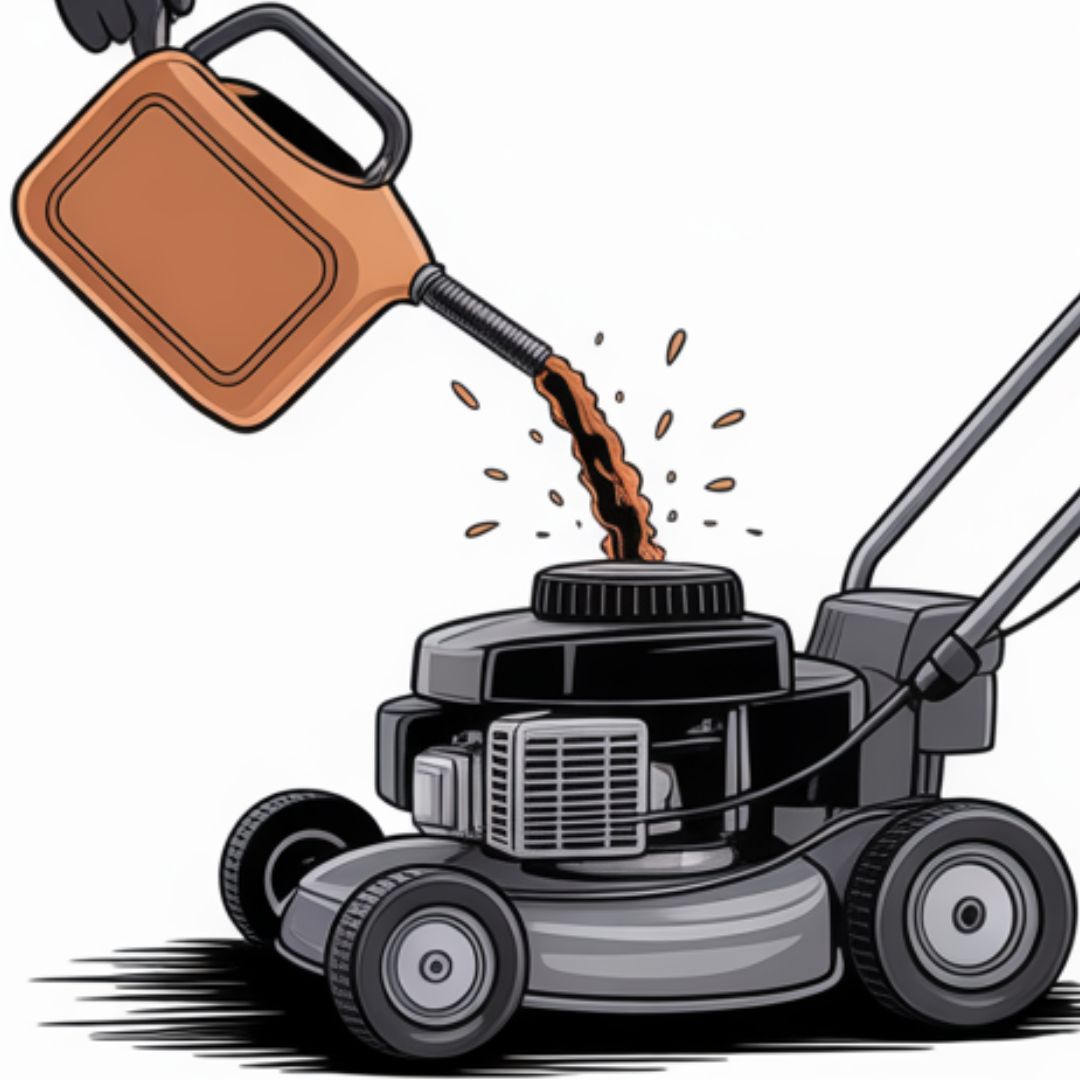
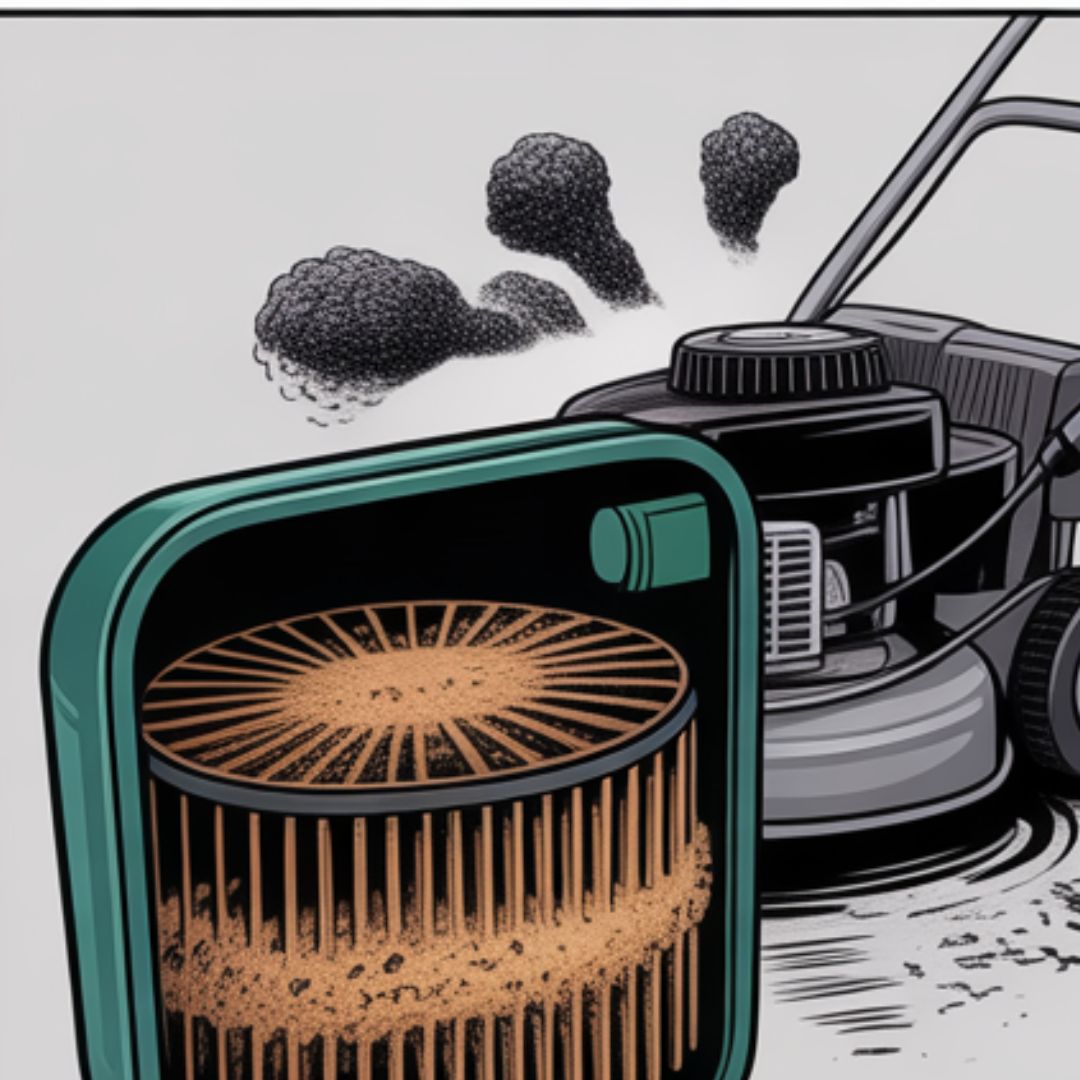
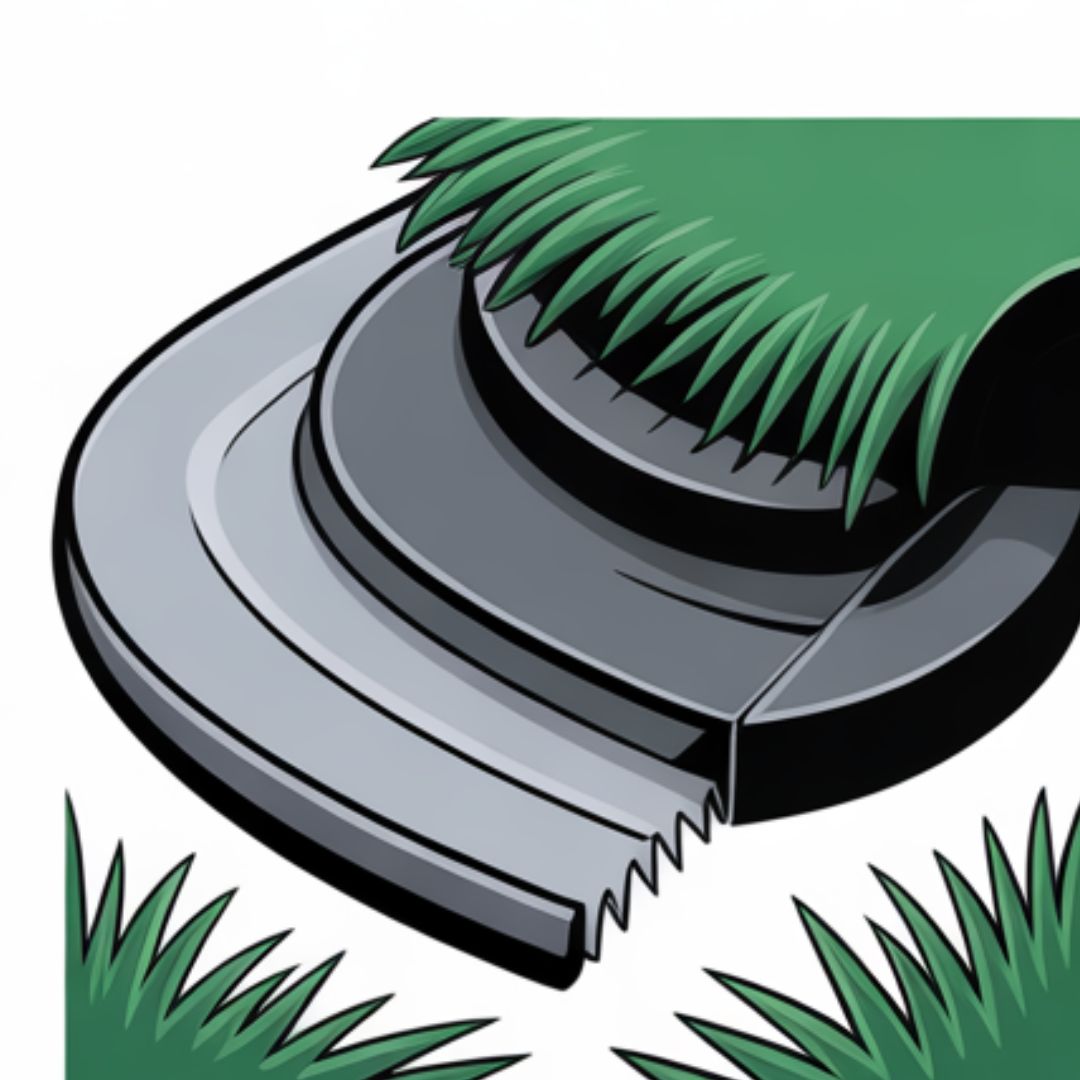
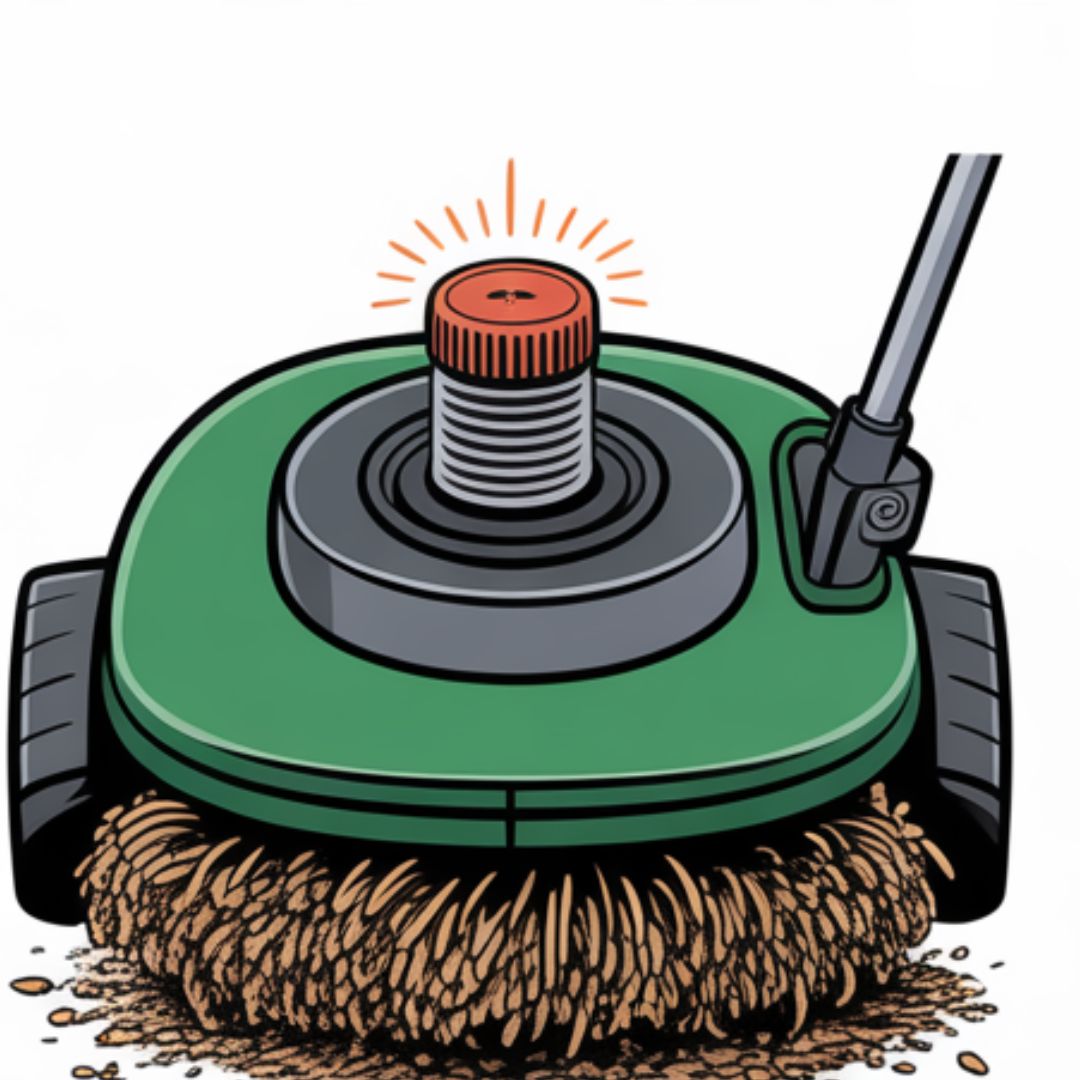

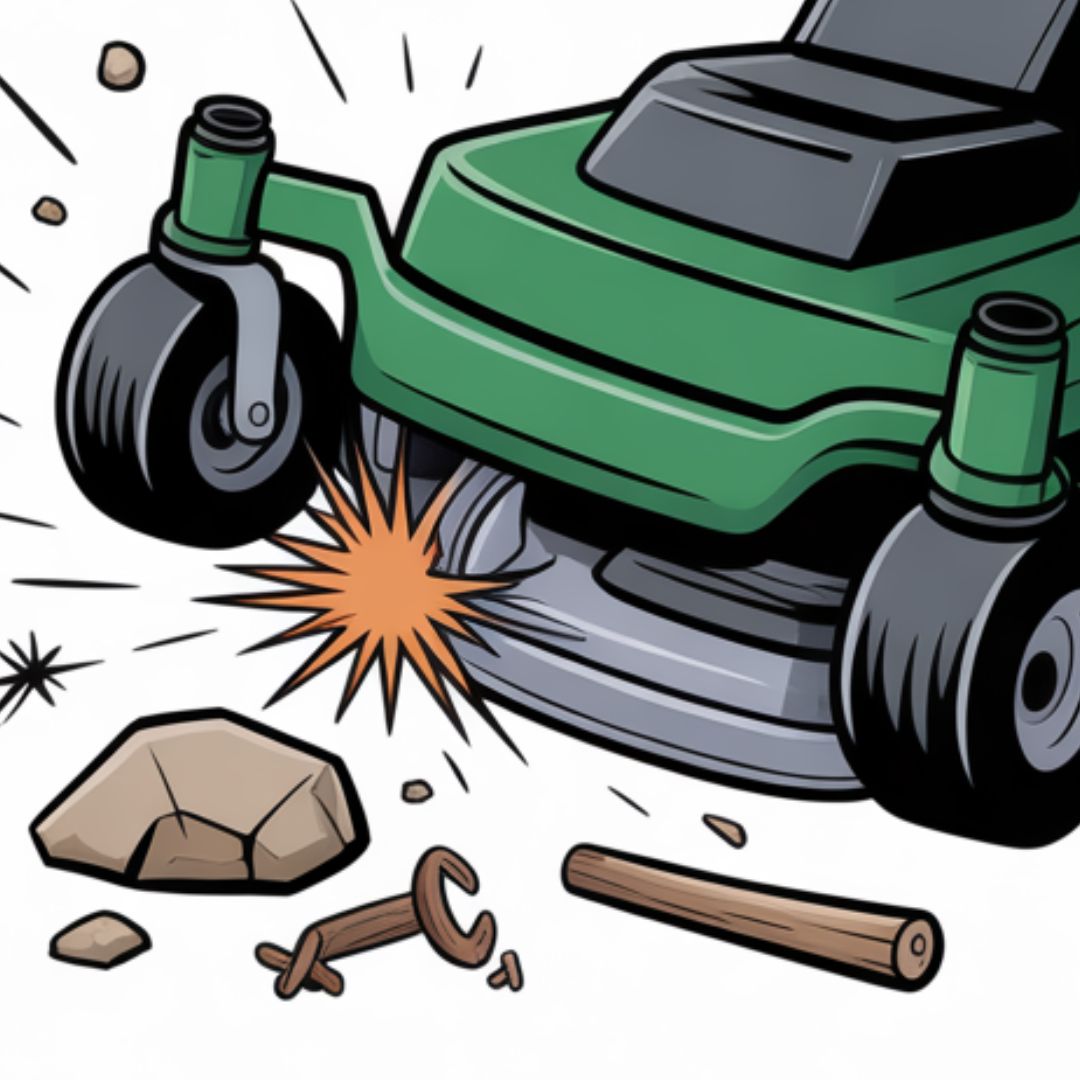

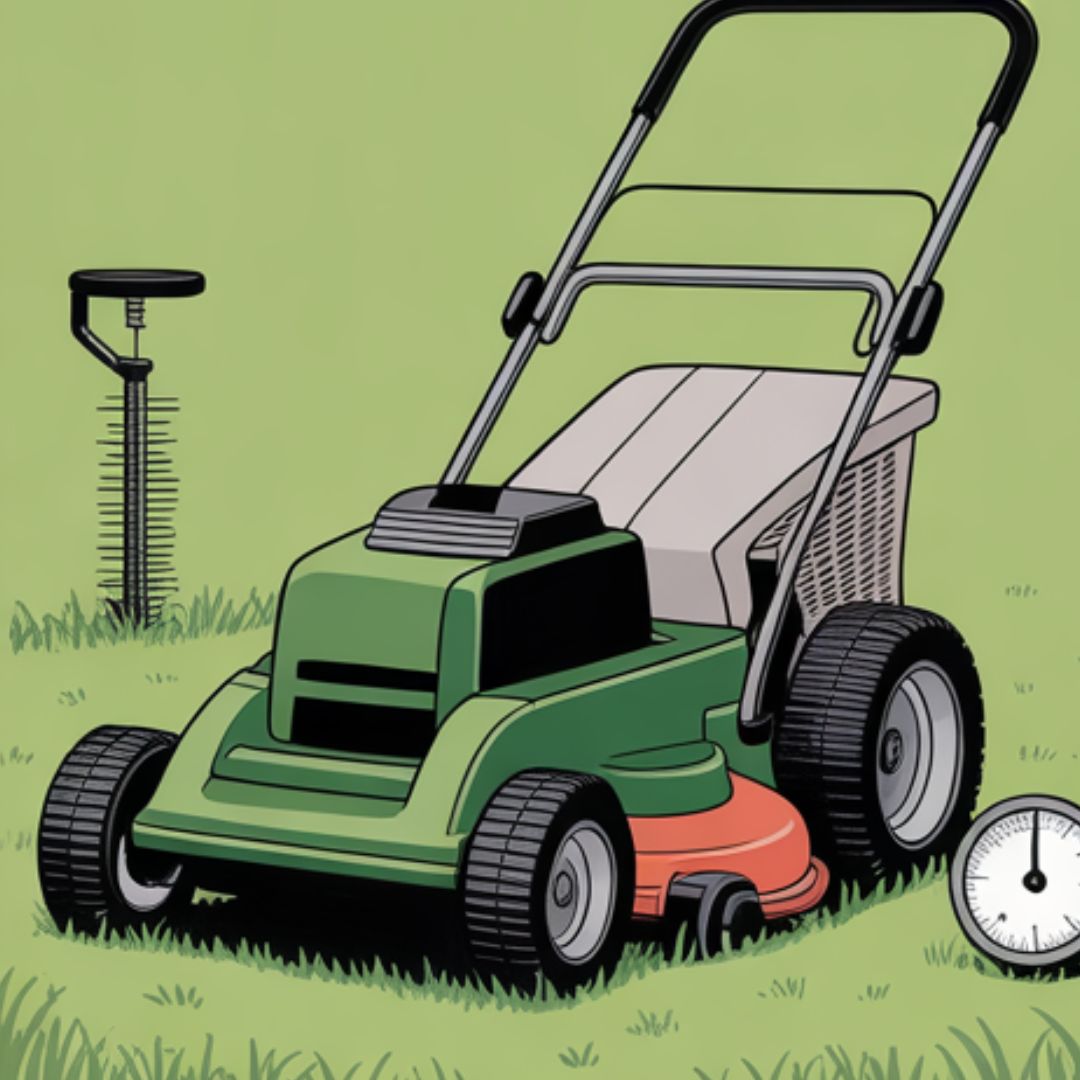
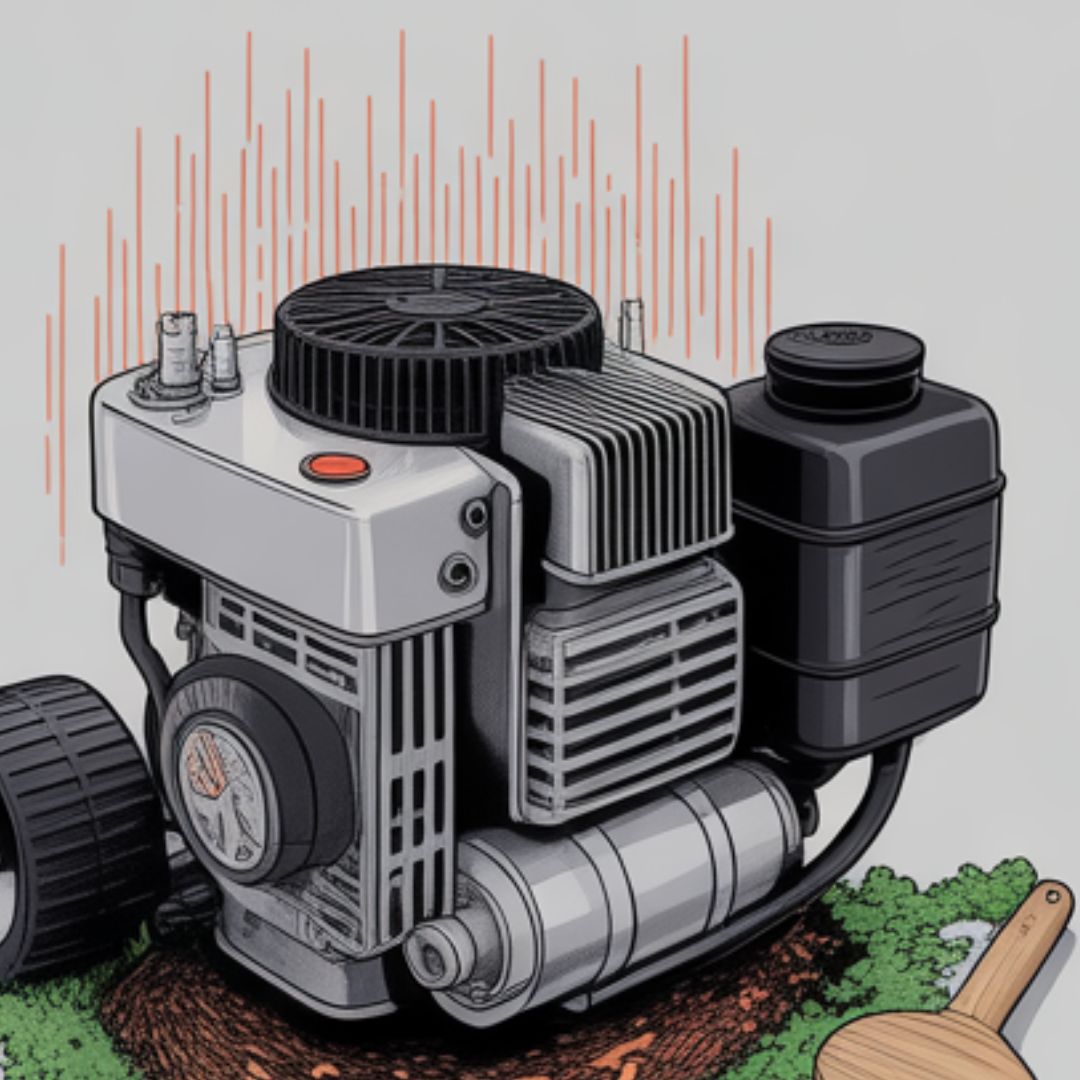
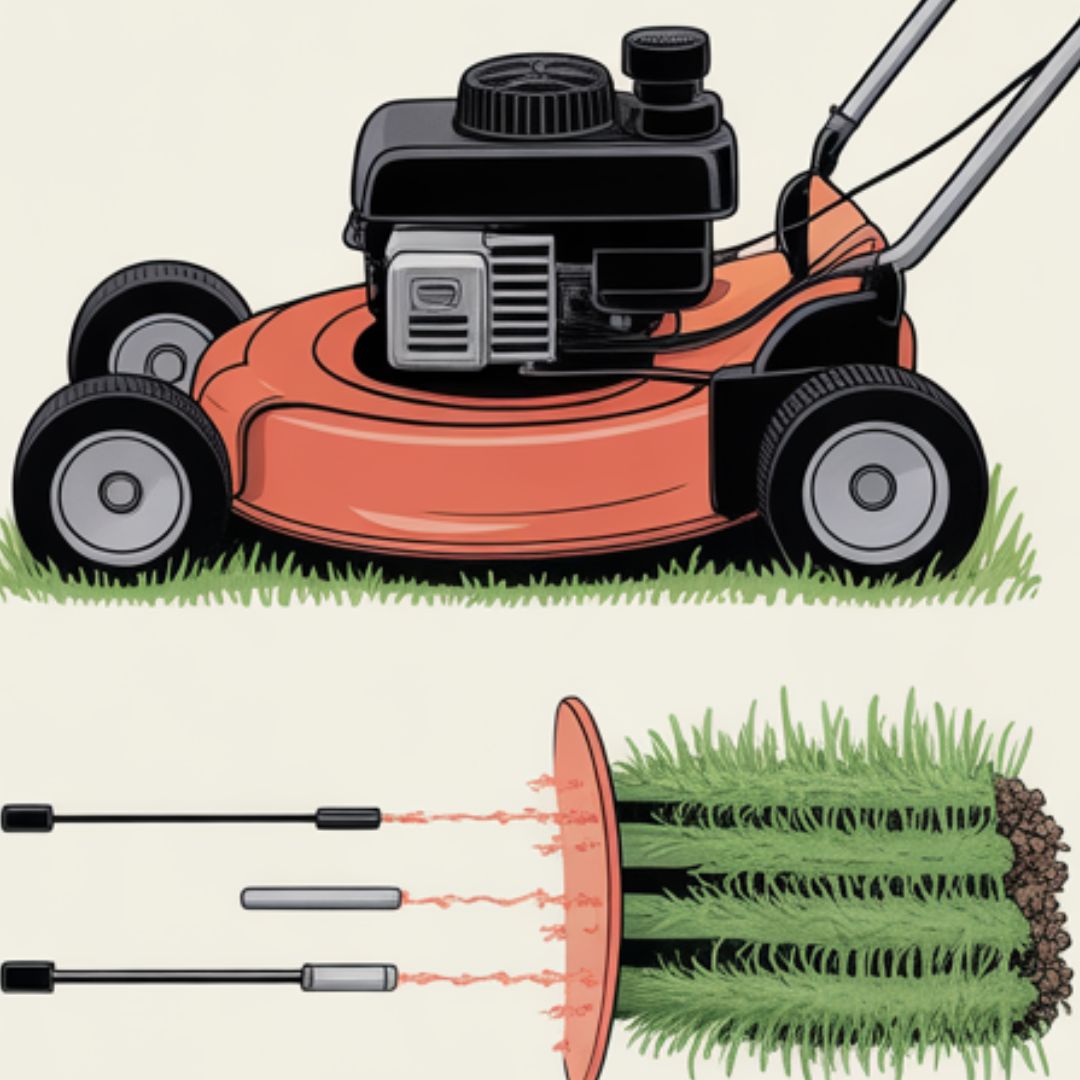
If Something Feels Off… Here’s What Your Mower Is Probably Trying to Tell You
Look, mowers don’t just “act weird for no reason.” When something feels off, it’s usually your mower begging you to fix a tiny problem before it becomes a big one. Most of these issues come straight from the lawn mower mistakes and bad mowing habits we talked about earlier — little warnings that pop up way before anything serious breaks.
Mower shaking like it’s trying to take off?
You probably hit something and bent the blade — or if you hit a rock hard, the crankshaft itself may be bent.
The big shaky feeling is the mower’s way of saying something isn’t straight.
Fast check: turn it off → tip safely → spin the blade. If it wobbles, you found the culprit.
Crooked or patchy cut?
The usual cause: low tire pressure on one wheel. Even a few PSI difference makes the mower lean.
That creates the “one side fade, one side buzzcut” look.
Quick fix: pump the soft tire → mow the patch again → perfect.
Mower clogging or leaving clumps?
Wet grass + long growth = instant deck clogging.
Grass buildup under the deck chokes airflow fast.
Fast check: scrape the deck + avoid wet mowing. Easy fix.
Mower suddenly losing power?
Classic airflow or fuel problem — dirty air filter, bad airflow, or old gasoline turning gummy.
Quick trick: tap out the filter → try again. If no change → replace old fuel.
Smells hot or smoky?
Overheating, clogged cooling fins, or low oil will all make your mower smell “hot.”
Burning smells are never normal — unless you love buying engines.
Fast check: clean fins → check oil → let it cool before finishing.
Mower bogging in thick grass?
Running too slow or mowing with dull blades causes that heavy bogging sound.
Half throttle mowing is textbook poor cutting + extra heat.
Quick fix: full throttle → sharp blade → smaller passes.
Mower won’t start at all?
Almost always one of these:
• Stale gas
• Loose spark plug wire
• Carburetor gummed from sitting
Fast fix: fresh fuel → reconnect plug wire → quick carb clean.
Mower sounds angry after dusty jobs?
Dust chokes everything — intake, cooling fins, filters, deck.
Airflow restriction = rough engine noise.
Quick trick: brush the fins + tap the filter + scrape the deck.
Everyday Lawn Mower Mistakes & Bad Mowing Habits
| Mistake | What It Really Does to Your Mower | Easy Fix (The “Do This Instead” Part) |
|---|---|---|
| Mowing wet grass | Causes mowing wet grass damage, nonstop clumps, deck clogging, and uneven cuts | Wait for the yard to dry; mow when the grass doesn’t stick to your shoes |
| Running with running low on oil | Burns the engine, leads to engine seize, turns your mower into a no oil mower statue | Check oil before each mow; top off or change when dark |
| Using old gasoline | Creates stale gas mower problems, won’t start issues, heavy carburetor gumming | Always use fresh gas; dump anything older than 30–60 days |
| Ignoring a dirty air filter | Restricts airflow, causes mower losing power, leads to overheating | Tap out dust; replace filter every season |
| Letting dull blades ride all summer | Causes dull blade damage, shreds grass, leaves scalping marks | Sharpen every 20–25 hours or when grass looks torn |
| Skipping deck scraping | Causes grass buildup, rust, airflow problems, and early deck rot | Use a putty knife after each mow — 20 seconds, done |
| Doing sharp fast turns on riders | Adds hydrostatic stress, rough pivots, and turf tearing | Slow down; make smooth, wide turns |
| Hitting sticks, rocks, toys | Leads to blade damage, terrible vibration, sometimes a bent crankshaft | Walk the yard first; pick up anything that’s not grass |
| Parking the mower wet | Causes mower rusting, moisture rot, hidden corrosion issues | Let it dry; scrape the deck; store under cover |
| Ignoring tire PSI | Causes uneven cuts, mower lean, flat tire mowing, and weird mower alignment | Check PSI every few weeks; keep fronts even |
| Letting cooling fins clog | Traps heat, leads to overheating, dust-packed poor airflow | Brush fins clean every few mows |
| Babying the throttle | Causes bogging, low blade speed, heat, and poor cutting | Run full throttle — that’s how mowers are designed |
U.S. Regional Mowing Tips
(Because Every State Tries to Mess With Your Mower Differently)
Every yard in America has its own personality. Some stay soggy for days. Some are dusty enough to choke a tractor. Some grow thick turf like they’re trying to win an award. And every one of those conditions can push your mower toward lawn mower mistakes, heat issues, clogged filters, or early mower damage over time if you’re not paying attention.
Here’s the quick-and-honest breakdown — region by region — so you don’t fall into those sneaky common mower mistakes homeowners make just because of where you live.
How Risky Is Mowing Where You Live?
Pick your state to see how weather and soil in your region create mower damage risks — and the quick checks that save your deck, blades, and engine.
Midwest
(Ohio, Michigan, Illinois, Minnesota, Wisconsin, Indiana, Iowa, Missouri, the Dakotas, Kansas, Nebraska)
The Midwest loves soaking your lawn for 48 hours after a storm. That means wet grass, clumps, and brutal deck clogging if you jump the gun and mow too soon.
What to expect:
Heavy spring rains, thick cool-season turf, low spots that stay soggy, and fast growth after storms. Great grass, but also perfect conditions for ruts, clumps, and deck blockages if you rush it.
Risky mowing habits in the Midwest:
- 👟 Fast check: If your shoes come back wet, don’t mow. You’ll end up with uneven cuts, muddy ruts, and a deck packed tighter than a PB&J.
- 🧱 Avoid mowing right after a big storm just because the sky looks clear. The soil underneath is still soup and will compact under your mower.
- 🧽 Quick tip: After spring rains, scrape the deck after every mow. Moisture + grass = rust city and awful airflow.
- 📏 Don’t drop the deck super low “so it lasts longer.” In a soggy Midwest yard, that’s a recipe for scalping and scalped mud patches.
Real example:
If your yard looks fine from the driveway but you hear the engine bog and see clumps shooting out like meatballs, the lawn’s still too wet — blame that 48-hour post-storm soak, not your mower.
South
(Texas, Florida, Georgia, Alabama, the Carolinas, Louisiana, Mississippi, Arkansas, Tennessee, Kentucky, much of Virginia & West Virginia)
Hot states thin oil faster, so running low on oil happens way more often down here. Heat also exaggerates overheating and bogging when thick grass, humidity, and dust all pile on at once.
What to expect:
Long mowing seasons, intense sun, humidity, and warm-season grasses that grow fast and show every mistake. Engines run hotter, fluids break down quicker, and cooling systems actually matter.
Heat-driven mower risks in the South:
- 🔥 Real talk: If your mower smells hot after 10 minutes, stop. Check the oil level and the cooling fins. Southern summers don’t play around.
- 🛢️ Quick trick: Change oil more often than the manual says during peak summer. It’s cheap insurance compared to a fried engine.
- 💨 Blow or brush grass off the engine shroud and cooling fins every mow. Packed fins mean trapped heat and surprise shutdowns.
- ✂️ Thick St. Augustine and Bermuda will bog a hot, tired engine fast. Raise the deck a notch and mow a bit more often instead of forcing one aggressive cut.
Real example:
If the mower starts losing power halfway through a Southern summer mow and you catch a burnt-oil smell, you’re not “due for a carb clean” — you’re overdue on oil checks and cooling fin cleaning.
Northeast
(New York, Pennsylvania, Massachusetts, New Jersey, Connecticut, Rhode Island, Vermont, New Hampshire, Maine, plus Delaware & Maryland lean similar)
Morning dew sticks around forever. Folks mow too early and run straight into mowing wet grass damage and bad grass buildup that chokes the deck and leaves ruts.
What to expect:
Long, damp mornings, shady patches that never quite dry, and dense cool-season turf. Everything looks “fine” from the porch, but the deck tells a different story once you start mowing.
Moisture mistakes in the Northeast:
- ☀️ Rule of thumb: Mow after lunch, not breakfast. Let the sun do its job and burn off the dew before you fire up the mower.
- 🧼 Dewy grass packs into the discharge chute and underside of the deck fast. Clean them regularly to keep airflow strong and prevent bogging.
- 💪 Mini tip: Northeast grass is thick — sharpen those dull blades more often or you’ll start seeing scalping, torn edges, and frayed, brown tips.
- 🚜 Avoid mowing when the ground still gives way under the tires. Soft soil turns into ruts and compacted tracks you’ll fight all season.
Real example:
If your mower sounds fine but leaves clumps behind every pass on an “early” weekend mow, it’s not weak — you just picked a dew-soaked time slot.
Pacific Northwest
(Washington, Oregon, and other endlessly damp coastal pockets)
Moisture everywhere. Even on days it “didn’t rain,” the deck somehow ends up soaked. Constant wet conditions cause mower rusting, moisture rot, and nonstop clogged deck issues.
What to expect:
Mist, drizzle, mossy lawns, soft ground, and green growth that never truly dries out. Your mower basically lives in a damp basement… even when it sits in the garage.
Hidden moisture damage in the PNW:
- 🌀 Most people miss this: Dry your mower before storing it. Seriously. A fan or open-air spot helps. Otherwise rust wins — quietly.
- 🔍 Quick fix: Inspect the deck underside every other mow — mossy lawns clog fast and trap wet clumps against bare metal.
- 🧲 Wipe or blow off moisture on exposed metal parts after mowing. Little pockets of trapped dampness turn into flaky rust patches.
- 🧴 Consider a light anti-rust spray on the underside of the deck at the start of the season. It buys time against constant dampness.
Real example:
If your deck looks like it aged 10 years in 3, it’s not just “old metal” — it’s weeks of wet grass sitting there after every mow with zero drying time.
Southwest
(Arizona, New Mexico, Nevada, Utah, Colorado, Wyoming, Idaho, Montana, much of inland California)
Dust. Dust. And more dust. Every mow turns into dust intake city, and the dirty air filter takes a beating. Cooling fins clog fast, leading to surprise overheating halfway through the yard.
What to expect:
Dry air, dusty soil, rock-hiding turf, and powdery ground that throws grit everywhere. Your mower is basically vacuuming the yard as much as it’s cutting it.
Dust & overload issues in the Southwest:
- 💨 Fast check: Tap out the filter after every dusty yard run. You’ll be amazed how much fine powder falls out.
- 🧹 Brush off the engine shroud and cooling fins after mowing. When those fins fill with dust, overheating shows up out of nowhere.
- ➕ Bonus tip: If your yard is basically desert soil, consider mulching less or bagging more often — the mower works harder in powder-like dirt.
- 🪨 Walk the yard for rocks before mowing. Southwest lawns hide surprises that can chip blades or bend the deck lip in one hit.
Real example:
If your mower suddenly starts surging and overheating halfway through a dusty yard, the “problem” is probably just a suffocated filter and dust-jammed fins — not a major engine failure.
FAQs
What ruins a mower the fastest?
Low oil, wet mowing, dirty filters, old gas, and dull blades — the five mower killers.
Fast check: Oil + sharp blade + clean filter + dry grass = happy mower.
Is it bad to mow wet grass?
Absolutely — fastest way to get clumps, deck clogging, and ugly cuts.
If your yard feels sticky under your shoes, don’t mow.
How often should I sharpen mower blades?
Every 20–25 hours.
If a grass blade looks torn instead of sliced, sharpen ASAP.
Why is my mower vibrating so much?
You probably hit something — stick, root, rock.
Spin the blade. If it wobbles, it’s bent.
Why does my mower shut off in tall grass?
Classic bogging: low throttle, dull blades, clogged deck, dirty fins.
Full throttle + clean deck + sharpened blade = solved.
Can old gas mess up a mower?
Yes — #1 reason mowers won’t start after sitting.
Fresh fuel only. Old gas gums the carb.
Why does my mower overheat?
Blocked cooling fins, packed deck, dirty filter, low oil, hot weather.
Brush fins, scrape deck, check oil — done.
Why are my stripes crooked?
Tire ruts or low PSI cause uneven cuts.
Quick squeeze-test tires before mowing.
Is it okay to store a dirty mower?
No. Grass holds moisture and rusts the deck.
Even a quick wipe prevents early deck rot.
Do I really need full throttle?
Yes — cleaner cuts, cooler engine, no bogging.
Half throttle makes everything worse.
Conclusion
Here’s the bottom line, neighbor: most mowers don’t die from some big dramatic failure. They die from the little stuff — the everyday bad mowing habits, the “I’ll do it next time” moves, the lawn mower mistakes we’re all guilty of when we’re rushing or trying to beat the weather.
That’s where the real mower damage over time sneaks in.
- Skip an oil check? Suddenly you’re running low on oil.
- Ignore the filter? Now you’ve got dust intake choking things out.
- Push through wet grass? Enjoy the deck clogging and uneven cuts.
- Keep mowing on dull blades? Say hello to shredded turf and scalping.
- Let old gasoline sit in the tank? Good luck when it won’t start in spring.
These small mistakes — these tiny mower misuse problems — add up way faster than people realize. And they’re exactly the actions that shorten mower lifespan every single season.
The good news?
Every one of these habits has a cheap, fast fix.
You don’t need a mechanic.
You don’t need fancy tools.
You just need a few minutes after each mow and a little common sense.
Quick cheats to remember:
- Fresh gas.
- Clean deck.
- Sharp blade.
- Full throttle.
- Dry yard.
- Air filter that isn’t suffocating.
- Tires with the right PSI.
Do those, and your mower will run smoother, cut cleaner, and last way longer. You’ll avoid the big headaches — the engine seize, the bent crankshaft, the overheating, the vibration, all the annoying stuff that ruins weekends.
Think of it like this: Treat your mower halfway decent, and it’ll stop acting like a grumpy teenager that hates chores.

I’m David man behind Lawn Mowerly; I’ve been dealing with lawnmowers and Tractors with my father since I was a kid. I know every make and model and what each one is capable of and love helping people find the perfect equipment for their needs.
